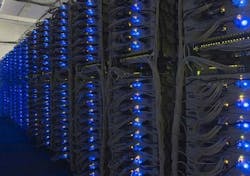Lockheed Martin continues work on National Cyber Range training for exceptionally virulent code
Officials of the U.S. Army Contracting Command at Redstone Arsenal, Ala., are asking Lockheed Martin for working involving the National Cyber Range (NCR) to allow potentially virulent code to be introduced and studied on the range without compromising the range.
The Army Contracting Command is awarding this order on behalf of the Army Program Executive Office for Simulation, Training, and Instrumentation in Orlando, Fla.
The NCR helps with test & measurement of offensive and defensive technologies involving computer malware, viruses, and other cyber warfare aspects.
Related: The shadowy world of cyber warfare
The NCR is designed to allow potentially virulent code to be introduced and studied on the range without compromising the range itself, Army officials say. Lockheed Martin, which has been working on the NCR for at least the past two years, is considered the only company able to undertake such a task.
The NCR is a self-contained facility for advanced cyber research and testing, using hardware and software automation tools that enable a range to be configured rapidly to emulate complex, large-scale heterogeneous networks.
The range involves software tools and sensors that enable military cyber warfare experts to study cyber threats like worms and viruses so they can understand their behavior and potential defenses, while enabling technicians to sanitize and reconfigure the range quickly after testing.
The NCR can host several independent, simultaneous, multi-security-level experiments on the same infrastructure, while simplifying the introduction and testing of new code on a cyber range. The NCR seeks to provide ways to test realistic cyber warfare capabilities in a secure and realistic environment.
Related: 2017 will be the year of cyber warfare
The range can protect against denial-of-service originating from within the range; malware spillage from test beds; unauthorized access; and data spills across tests boundaries while archived.
The range can isolate the test beds to ensure that the range can operate several simultaneous tests at different security and sensitivity levels, as well as prevent test beds from interfering with other test beds by spilling malware code, technology, or characteristics.
The NCR was developed originally by the U.S. Defense Advanced Research Projects Agency (DARPA) in Arlington, Va. In late 2012 DARPA turned management of the range over to the Pentagon's Test Resource Management Center.
Key benefits of the NCR are the speed with which the range can be re-configured, the diversity of the networks that can be emulated, and the flexibility to handle several activities simultaneously at different classification levels, military experts say.
The NCR provides advanced cyber research and development of new capabilities, analysis of malware, cyber training and exercises, and secure cloud computing and storage architectures.
The NCR is designed to test technologies such as host security systems, and local and wide-area network security tools by integrating, replicating or simulating the technologies. The range provides a large-scale Global Information Grid (GIG) infrastructure, where experts can analyze and test cyber warfare technologies under real-world conditions.
The range's test beds include the ability to test new network protocols, satellite and radio frequency communications, and mobile tactical and maritime communications.
For more information contact Lockheed Martin Missiles and Fire Control online at www.lockheedmartin.com/us/mfc.html, the Army Contracting Command-Redstone at http://acc.army.mil/contractingcenters/acc-rsa, or the Army Program Executive Office for Simulation, Training, and Instrumentation at www.peostri.army.mil.
Ready to make a purchase? Search the Military & Aerospace Electronics Buyer's Guide for companies, new products, press releases, and videos
